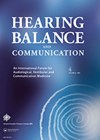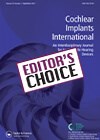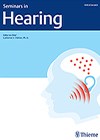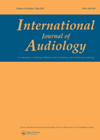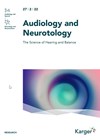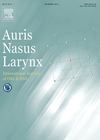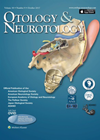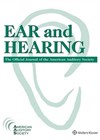
Journal Reviews
Inequitable access to cochlear implantation across the UK
Referral rates and uptake of cochlear implantation in the global adult population are low. Five audiology centres across England and Wales retrospectively explored data over a six-month period in late 2019, post implementation of new National Institute for Health and...
Newborn sensorineural hearing loss – what is the incidence?
In the last two decades, the introduction of newborn screening for hearing loss has dramatically lowered the average age of newborn hearing loss diagnosis to around two to three months of age. The benefits of early diagnosis are manifold, enabling...
Mondini dysplasia and cochlear implantation
Approximately 20-28% of sensorineural hearing loss in children arises due to a cochlear malformation. Mondini dysplasia includes a cochlear with one and a half turns and an incomplete interscalar septum. Cochlear implantation is a common treatment protocol for children with...
Third-party disability in cochlear implant users
Hearing loss causes changes for those experiencing it and the people who share in their everyday lives, often referred to as third party disability or caregiver burden. This study emphasises the notion that this phenomenon can be considered a disability,...
MRI scanning patients with cochlear implants and auditory brainstem implants
In the last five to six decades, MRI scanning has gone from physics experiments in Nottingham University through to Nobel prize-winning work by Sir Peter Mansfield and Paul Lauterbur, to a ‘routine’ imaging modality with an estimated 60 million MRI...
What is in the Fountain of Youth?
Does the auditory system have to age? Can we become more like turtles or jellyfish and keep our internals running without degradation? This essay considers the theoretical underpinnings of biological processes in the cochlear, in particular the role of the...
Are we all in the matrix?
In the entirety of training and in further practice, we are instilled with the premise of patient-centred care and individualised management plans based on informed consent. The question in the new age of telehealth/e-health is how to mimic that personalisation...
The ‘My Hearing Explained’ tool: audiologist and client perceptions
The study notes that the pure tone audiogram has been the primary clinical and counselling tool used by clinicians to assess and describe hearing thresholds to individuals and families since 1922. The Ida Institutes, ‘My Hearing Explained’ tool has become...
Softband vs. adhesive adapter in children with unilateral microtia and atresia
A bone conduction device is a well-established treatment indicated for patients with unilateral microtia and canal atresia. There are a variety of nonsurgical bone conduction hearing aids (BCHAs) with different coupling methods (softbands/adhesive adapter/spectacles). There appears to be uncertainty of...
Advances in auditory implants
This article provides an overview of auditory implants. Implanted auditory devices may be classified into bone conduction implants (BCI) and active middle ear implants (AMEI) that stimulate cochlear hair cells, and cochlear implants (CI) that stimulate neural structures. CIs bypass...
Hearing preservation in CI, any predictors?
The electrically evoked compound action potential (eCAP), obtained non-invasively from cochlear implant (CI) recipients, represents a population response of the auditory nerve to electrical stimulation. The eCAP characteristics include threshold (the lower the better), growth of response (the steeper the...
Is it beneficial for children to undergo bilateral cochlear implantation before 12 months old?
Universal newborn hearing screening has allowed early diagnosis and, subsequently, early intervention in hearing loss. In 2020 the Food and Drug Administration candidacy criteria for cochlear implants (CI) expanded to include profound sensorineural hearing loss (HL) in children as young...



